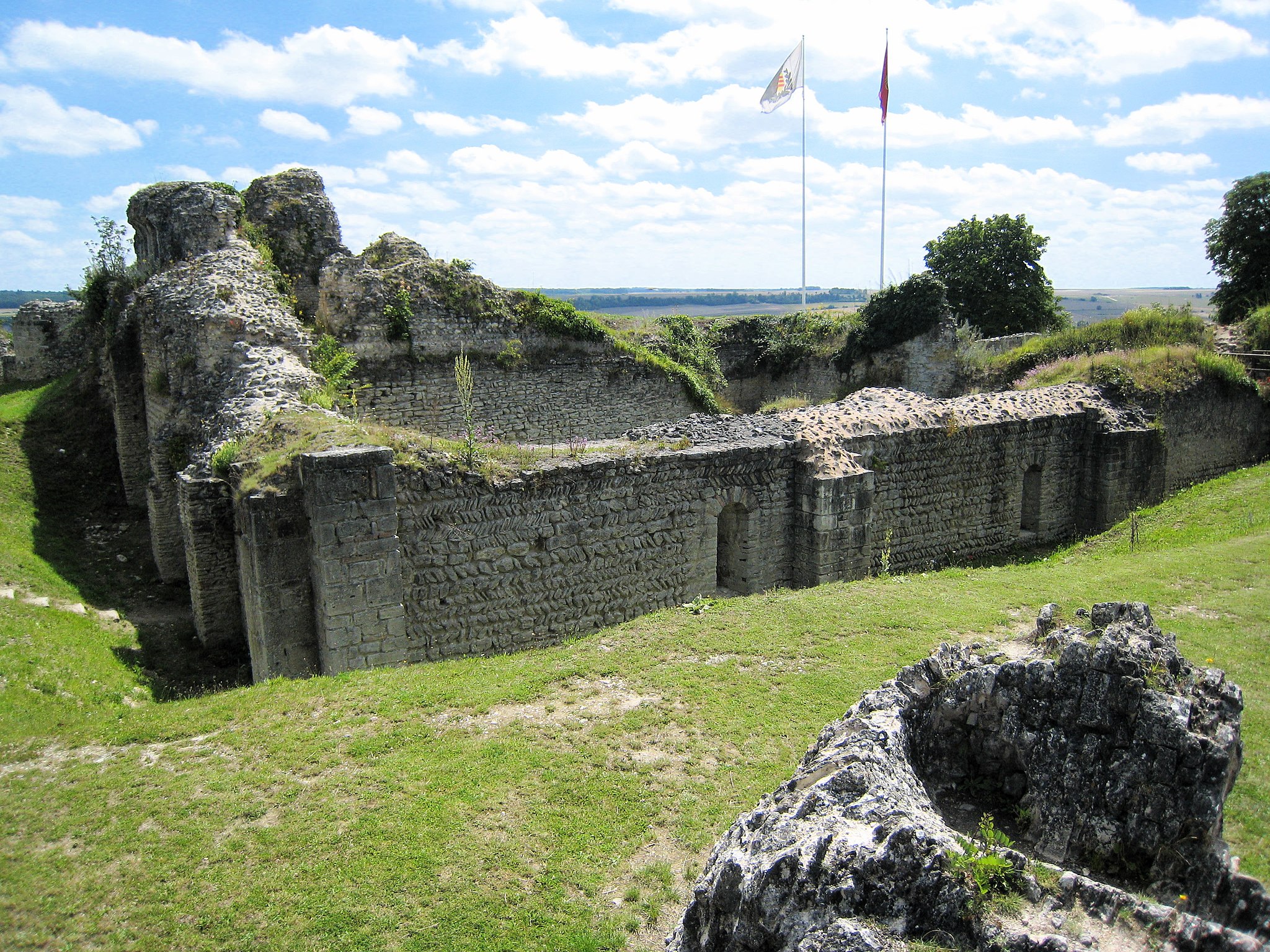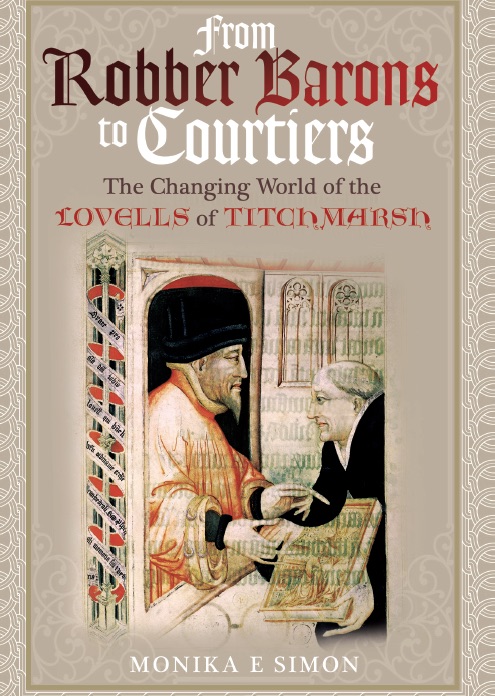|
William de Breteuil
|
|
|

The ruins of the castle of Ivry-la-Bataille. Once a formidable
border fortress and possibly an inspiration for the White Tower in
London.
(I, Nitot;
https://commons.wikimedia.org/wiki/File:Chateau-Ivry-la-bataille-le-donjon.jpg) |
|
|
|
|
|
The
Lovells of Titchmarsh
Titchmarsh Castle
Minster
Lovell Hall
Old Wardour Castle
Other Lovell Castles |
William
de Breteuil was the eldest son of William FitzOsbern, 1st Earl of
Hereford and Adeliza de Tosny. William fitzOsbern was one of
William the Conqueror's most loyal and important supporters and
had gained great wealth in England and Normandy. After William
FitzOsbern's death in 1071, his lands were split between two of
his sons William and Roger de Breteuil, 2nd Earl of Hereford. It
was Roger who inherited William FitzOsbern's earldom of Hereford
while William inherited the lands in Normandy. Another son, Rodul,
was a monk at Cormeilles, and his only daughter Emma married Ralph
de Gael.[1]
|
|
Francis,
Viscount Lovell and Sir Thomas Lovell
Francis Lovell as
Protagonist in Historic
Novels |
In
1078, William de Breteuil joined the rebellion against William the
Conqueror led by the Conqueror's eldest son Robert Curthose.
William the Conqueror attacked his rebellious son and his allies
but was beaten at Gerberoi. Negotiations between father and son
ensured their reconciliation, and William renewed his grant of
succession in Normandy to Robert.[2]
|
|
The
Great Lord Lovell? |
After the death of
William the Conqueror, William de Breteuil was one of the nobles
who expelled the royal garrisons from their castles. To assure
his support, Robert Curthose, as the new Duke of Normandy,
granted him possession of the Ch‚teau d'Ivry-la-Bataille, a
strong castle on the river Eure.[3] William de Breteuil
installed Ascelin GoŽl, Lord of Brťval as castellan of Ivry, a
decision he must have later regretted bitterly. In 1089, Ascelin
GoŽl deprived William de Breteuil of the Castle of Ivry and
handed it over to Robert Curthose. William only recovered the
castle by paying the duke of several thousand livres. |
|
|
|
|
|
This was the beginning of a long
feud between William and Ascelin GoŽl and 'and the entire
neighbourhood was troubled by plundering, burning and
slaughter.'[4] In February 1091 or 1090, Ascelin GoŽl secured the
support of Richard de Montfort and King Philip I of France who
sent some of his household troops. With them Ascelin defeated
William de Breteuil and his troops. William himself, Roger de
Glos, and many other soldiers were captured. They were
incarcerated at Brťval and for three months Ascelin submitted his
prisoners to various tortures. Orderic Vitalis describes that
often, in the most severe cold in winter, he would expose them to
the north or north-west wind in the window of his upper hall, clad
only in shirts soaked with water, until the whole garment was
frozen stiff round the prisoners' bodies'.[5]
|
|
|
|
|
|
Several
noblemen, including Richard the Montfort and Hugh Montgomery,
arranged a truce, but William de Breteuil had to pay a high price
for regaining his freedom: He had to pay a large ransom, surrender
the castle of Ivry to his Ascelin GoŽl and marry his illegitimate
daughter Isabel to him.[6] |
|
|
|
|
|
William
de Breteuil tried to regain Ivry in the following year but was not
successful. He then gained support from Robert Curthose, King
Philip of France, and Robert of BellÍme, 3rd Earl of Shrewsbury.
They besieged Ascelin GoŽl at his castle at Brťval, who was forced
to surrender, after an intense siege of two months, and hand the
castle of Ivry back to his father-in-law.[7]
|
|
|
|
|
|
William
de Breteuil was a staunch supporter of Robert Curthose. In 1089,
William was one of Robert's captains during the duke's war against
the count of Eu and Gerard of Gourney. In the following year,
William II of England attempted to conquer Normandy and fomented
rebellion among his brother's disgruntled subjects. His supporters
instigated a revolt in Rouen, but Robert was able to recapture the
city with the help of his loyal barons, including William de
Breteuil. William was one of the barons, alongside Robert de
BellÍme and Gilbert Laigle, who behaved like foreign invaders,
looting the city and taking a large number of citizens with them
as prisoners whom they released only after they had paid a
considerable ransom.[8] |
|
|
|
|
|
When Robert Curthose left Normandy for the First Crusade, William II
became regent of Normandy. William de Breteuil was a member of the
king's hunting company on 2 August 1100, when William was fatally
hit by an arrow. When it was clear that the king was dead, William
de Breteuil raced to Winchester, where he arrived even before the
king's younger brother Henry I of England. William reminded Henry
and the other barons that they had all sworn homage to Robert
Curthose, who was at this time on his way back from crusade. Despite
this reminder, Henry I retained the support of the barons, assumed
control of the castle of Winchester, the treasure stored in it, and
was acclaimed king.[9] |
|
|
|
|
|
William
de Breteuil married Adeline de Montfort-sur-Risle. They had no
children. William died on 12 January 1103 at Bec Abbey.[10]
|
|
|
|
|
|
William
de Breteuil had two illegitimate children, a son and a daughter.
Their mother is unknown. His son Eustace de Breteuil, married
Juliane de Fontevrault, one of the illegitimate daughters of Henry
I. Eustace eventually inherited his father's estates, but lost
most of them after he rebelled against Henry I. |
|
|
|
|
|
Isabel
de Breteuil, William de Breteuil's illegitimate daughter, was
married Ascelin GoŽl, Lord of Brťval. Her hand had been the price
William de Breteuil had paid to regain his freedom. What her
reaction to this development was is unknown. According to Orderic
Vitalis, they had seven sons who 'continually grew in wickedness
and caused widows and poor people to weep bitterly by their brutal
acts'.[11] |
|
|
|
|
|
Notes:
1. Oxford Dictionary of National Biography, William fitz
Osbern, earl.
2. David C. Douglas, William the Conqueror. The Norman Impact
upon England (London, 1966), 237-39.
3. Orderic Vitalis, The Ecclesiastical History of Orderic
Vitalis, ed. and trans. Marjorie Chibnall, vol. iv (Books
vii and viii), (Oxford, 1973), 114-15.
4. Orderic Vitalis, vol. iv, 199.
5. Orderic Vitalis, vol. iv, 287.
6. Gesta Normanorum Ducum, vol. ii, p. 229; Orderic
Vitalis, vol. iii, p. 209, vol. iv, p. 286.
7. Orderic Vitalis, vol. iv, 287-91.
8. Frank Barlow, William Rufus (London, 1983), 273-75;
C. Warren Hollister, Henry I (New Haven and London,
2001), 75.
9. C. Warren Hollister, Henry I, 103-4.
10. Orderic Vitalis, vol. v, 41.
11. Orderic Vitalis, vol. iv, p. 203.
|
|
|
|
|
|
For
more
details about the feud between William de Breteuil, his son
Eustace, and Ascelin GoŽl and more about the fascinating history
of the Lovells of Titchmarsh and beyond see also my book: From
Robber Barons to Courtiers. The Changing World of the Lovells of
Titchmarsh (Pen & Sword Books, 2021).
 Out Now
Out Now
|
|
|
For
a more scholarly approach see also my thesis, Monika E. Simon,
'The Lovells of Titchmarsh. A Late Medieval Baronial Family
(1297-148?)', (unpubl. DPhil Thesis, University of York, 1999),
and all my other published and unpublished works. |
|
|
|
|
|
e-mail:
info@monikasimon.eu |
|
| Return
to Home |
|
|

